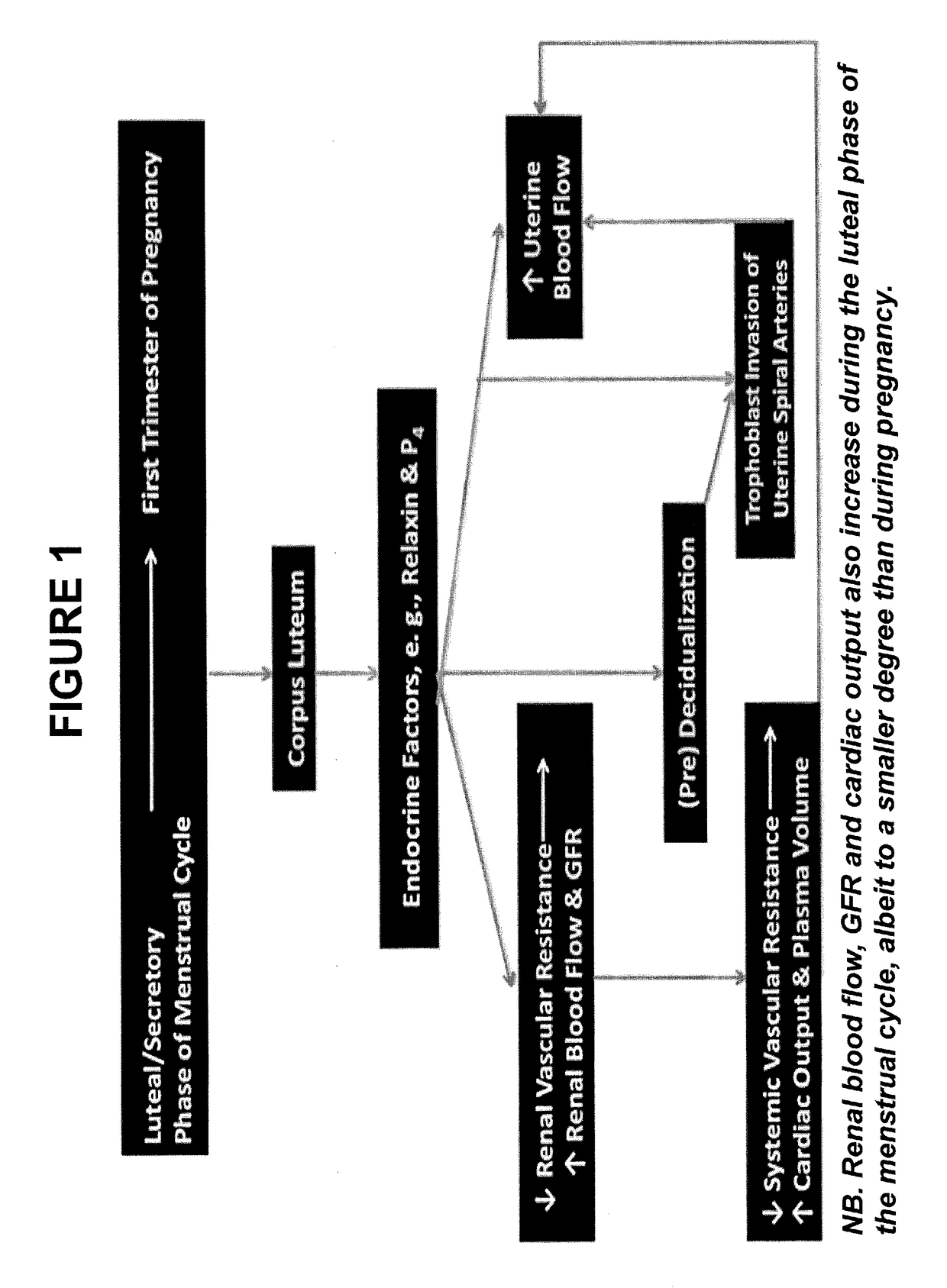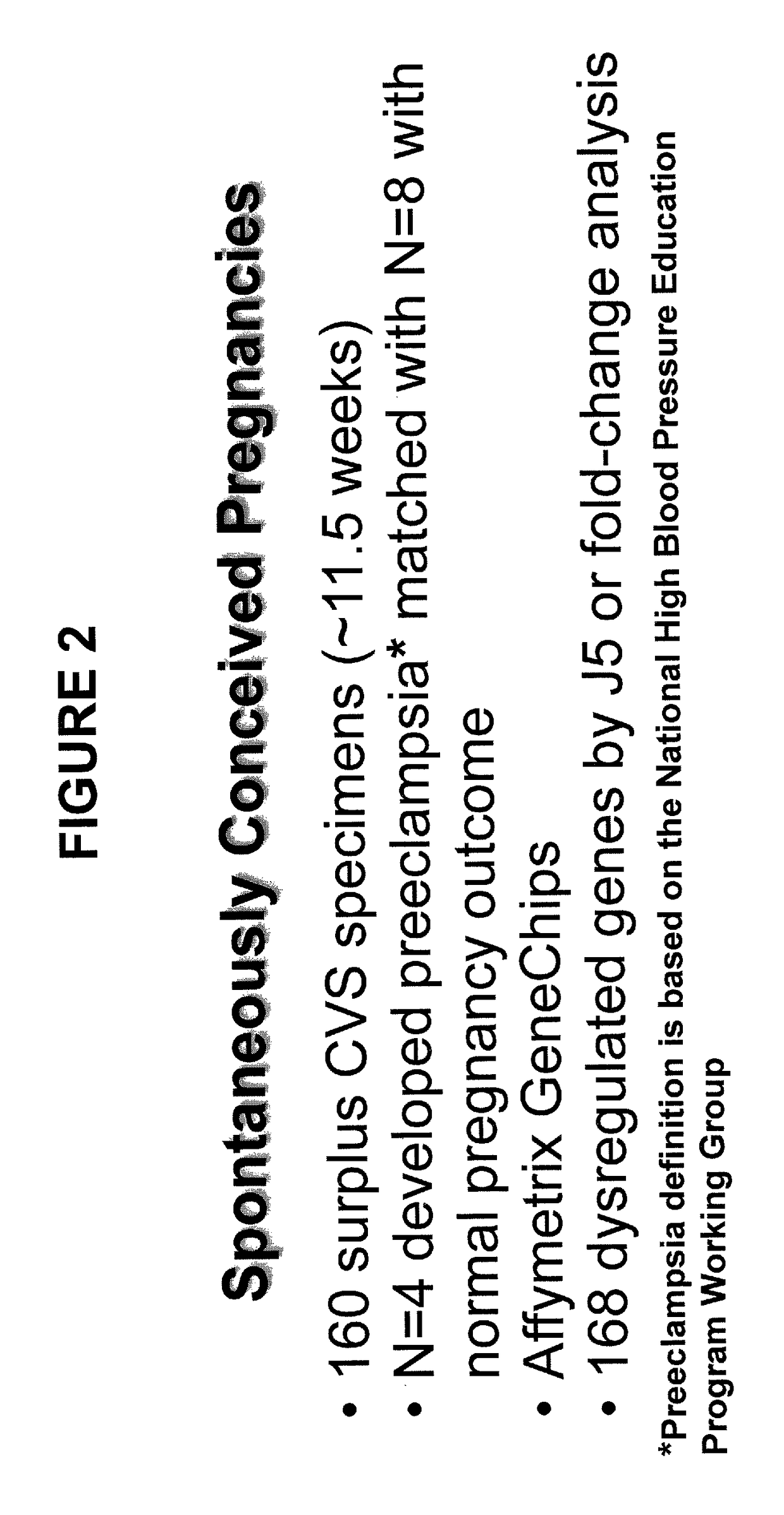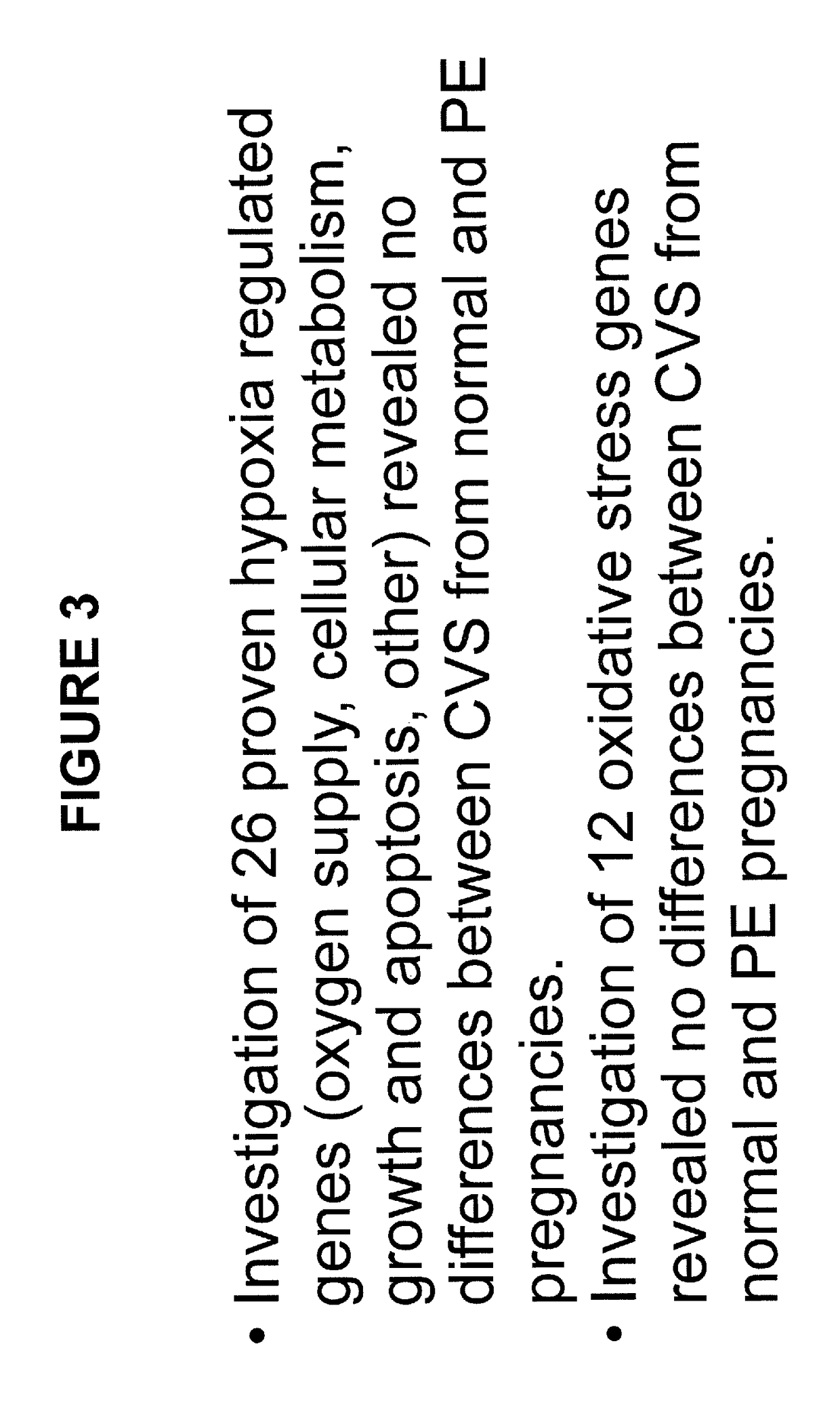Use of relaxin to treat placental syndromes
a technology of relaxin and placental syndrome, which is applied in the field of placental syndrome treatment with relaxin, can solve the problems of morbidity and mortality, maternal, fetal and neonatal mortality, and the risk of developing preeclampsia is significant, and the risk of developing placental syndrome is increased. the effect of facilitating the treatment of women and reducing the risk of developing placental syndrom
- Summary
- Abstract
- Description
- Claims
- Application Information
AI Technical Summary
Benefits of technology
Problems solved by technology
Method used
Image
Examples
examples
Identification of Differentially Expressed Genes
[0100]Materials and Methods: ˜160 surplus chorionic villus sampling (CVS) over a 4-5 year period were collected. CVS is typically performed in women of advanced maternal age at 10-12 weeks of gestation to check for fetal chromosomal abnormalities. CVS also contains maternal decidual tissue. Four of the ˜160 women developed PE ˜6 months later and they were matched to 8 women with normal pregnancy (NP) outcome. These CVS tissues were subjected to DNA microarray, and it was discovered that 168 genes differentially expressed by J5 and / or fold change (FC) analyses in CVS between women who developed PE and those who experienced NP outcome (see FIG. 2 and Application Publication No. 20110171650, which is incorporated by reference in its entirety, including all figures, tables and amino acid or nucleic acid sequences). There was no evidence for upregulation of hypoxia or oxidative stress regulated genes at this early stage of pregnancy as obse...
PUM
| Property | Measurement | Unit |
|---|---|---|
| concentration | aaaaa | aaaaa |
| concentration | aaaaa | aaaaa |
| concentration | aaaaa | aaaaa |
Abstract
Description
Claims
Application Information
 Login to View More
Login to View More - R&D
- Intellectual Property
- Life Sciences
- Materials
- Tech Scout
- Unparalleled Data Quality
- Higher Quality Content
- 60% Fewer Hallucinations
Browse by: Latest US Patents, China's latest patents, Technical Efficacy Thesaurus, Application Domain, Technology Topic, Popular Technical Reports.
© 2025 PatSnap. All rights reserved.Legal|Privacy policy|Modern Slavery Act Transparency Statement|Sitemap|About US| Contact US: help@patsnap.com



